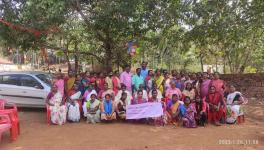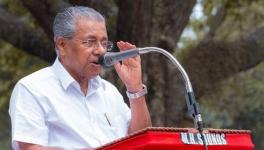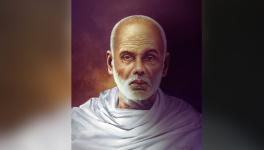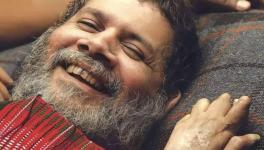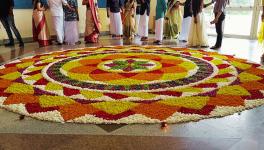Why Kerala Rises Like a Phoenix Each Time Calamity Strikes
Kerala is being taken note of around the world for its effective fight against COVID-19. Much has been written about the State’s early preparedness, effective lockdown, focussed healthcare interventions, special economic package, assistance for migrant labourers, decentralised initiatives through the local self-governments, inter-departmental coordination and so on. However, this is an attempt to evaluate the more fundamental characteristics of Kerala society, which has enabled its proactive interventions.
Culture of Solidarity
What has played a pivotal role in the state’s fight is the fact that Kerala, as a society, has stood united and resolute during these difficult times. The Chief Minister himself has reiterated time and again that the people of Kerala are the pillars on which their resistance has been built.
We have seen the people of Kerala come together to rescue their brothers and sisters during the historic floods in the previous years. Collective interventions have helped the state to overcome challenges like Ockhi cyclone and Nipah virus, and in moving ahead with the Rebuild Kerala Initiative as well.
How is it that Kerala’s society is able to repeatedly resort to community-led initiatives and interventions to tide over the challenges that it faces?
If you look at the history of modern Kerala, one can see that people’s movements have been integral to social change and human progress in the state. Renaissance movements in the first half of the 20th century, the peasants’ and workers’ movements before and after Independence, the mass literacy movement in the 1980s and the people’s planning movement in the 1990s need special mention.
Volunteerism by people’s organisations to address public issues is also common place. All these have strengthened the scope and effect of public action in Kerala. Hence, in the wake of any challenge, the society comes together to its own aid. The case has been the same this time around too.
People-Centred Democracy
Kerala’s proactive response to the COVID-19 pandemic was made possible because of the strong foundation laid down by the Kerala Model of Development as well. Right from the first communist ministry in 1957, social mobilisations by Left and progressive organisations and the responses to them by the state governments from time to time, have created a more people -centred and responsive democracy in the state. This, in turn, has strengthened public investments in health and education, paving the way for Kerala to achieve social indices that are at par with the most developed nations in the world.
The Kerala Model weaves in a rights-based approach in the developmental and welfare initiatives undertaken by the state. This approach has been upheld in the state’s fight against COVID-19, too.
COVID-19 manifests itself not simply as a health emergency, but also as an economic crisis. The fact that Kerala announced a comprehensive COVID-19 economic relief package of Rs. 20,000 crore on March 19, much before announcing a lockdown on March 23, is a clear indicator that right from its onset, Kerala has been addressing both sides of this challenge. It was a comprehensive measure which provided for welfare pensions, ration and essential supplies, interest-free loans, income through the rural job guarantee scheme MGNREGS, relaxation in taxes and payment of utilities and a healthcare package.
Even in the midst of this pandemic, the state government’s approach was rights-based and people-centred. This ensured that the general public, including guest workers, were taken care of. And since they were assured of the assistance due to them well in advance, they did not have to come out of their homes seeking help, or violate lockdown protocols for their survival. It is this combination of advanced planning and doling out of relief measures that helped Kerala to proceed with its healthcare interventions in a hassle free manner.
Healthcare as a Right
Kerala’s focus on public health started right from the days of the EMS Namboodiripad-led Left government of 1957–1959. The approach was clear back then, to provide public health services to all, without any difference on the basis of financial capability or social status. Accordingly, modern facilities and services were to be set up in District Hospitals, Local Fund Dispensaries were to be taken over by the government, and research was to be conducted on communicable diseases so as to take up preventive measures.
Subsequently, to ensure public health universally, scientific and community interventions were resorted to in healthcare, undertaking mass campaigns for vaccination and so on. Standards of public health were gradually raised through focused interventions right from the very bottom, at the level of Primary Health Centres or PHCs.
Despite liberalisation, Kerala’s public health sector has remained robust because, when health was sought to be made a ‘trade in services’ under the World Trade Organisation’s GAT or General Agreement on Trade and Services, Kerala firmly resisted it.
The Left and progressive movements in the state took a stern stand against it, saying that public health services cannot be transformed into a profit-making sector for private entities. Public health services should be accessible to the entire society, as a right; this was the view that was put forth by Kerala’s progressive sections when that debate was raging.
Aardram Mission et al
Staying true to that tradition, the present Left Democratic Front (LDF) government has also substantially invested in the public health systems in Kerala, particularly through the Aardram Mission, aimed at making government hospitals people-friendly. It has improved infrastructural facilities and services in government hospitals and health centres.
PHCs have been upgraded to Family Health Centres so that lifestyle diseases and third generation health problems can be addressed. Super-specialty treatment – for heart and kidney ailments – is now available at District and Taluk Hospitals. Special attention is provided to tackling second and third generation health problems and lifestyle diseases as well.
Taking due note of the repeated incidence of communicable diseases in the state, the current LDF government set up an Institute of Advanced Virology. To utilise indigenous knowledge in addressing healthcare issues, an International Ayurveda Research Institute is being set up. Research in biotechnology and medicines is being encouraged at the Life Sciences Park.
A generic brand of medicines has been developed so that essential medicines can be provided at a cheaper rate.
The Health Department even saw a spike in the intake of healthcare professionals since 2016. Public sector Kerala State Drugs and Pharmaceuticals was revamped to increase the production of medicines within the state. Its fortunes were turned around to become profitable and they had even started exporting medicines.
It is this focus on public health and auxiliary systems that has helped Kerala give quality treatment to COVID-19 patients in the state. The fact that even very elderly patients have been brought back to life in Kerala, that their recovery rate is extremely high and that their death rate is low even by international standards, is a testament to how capable Kerala’s public health care system is.
Sound Foundation
In comparison to other Indian states, Kerala has been successful in the battle against COVID-19, because its response was built on a sound foundation. That foundation had been laid over decades of continuous interventions and was there even before the pandemic struck. Kerala could initiate multi- pronged interventions at one go because the foundation had already been laid and it was further strengthened by the current LDF government's Aardram Mission and its interventions in auxiliary systems. People, their rights, the solidarity they weave and the democracy they build, have been central to Kerala’s success story thus far.
The writer is an independent researcher. The views are personal
Get the latest reports & analysis with people's perspective on Protests, movements & deep analytical videos, discussions of the current affairs in your Telegram app. Subscribe to NewsClick's Telegram channel & get Real-Time updates on stories, as they get published on our website.











